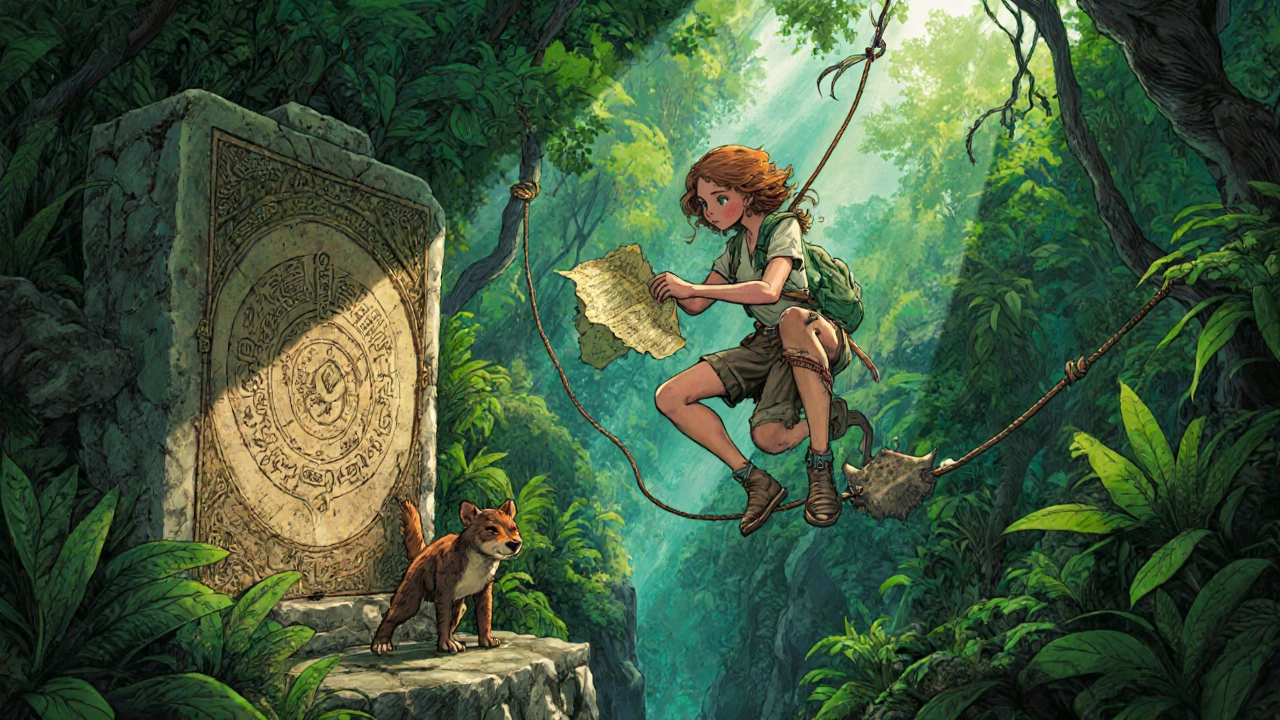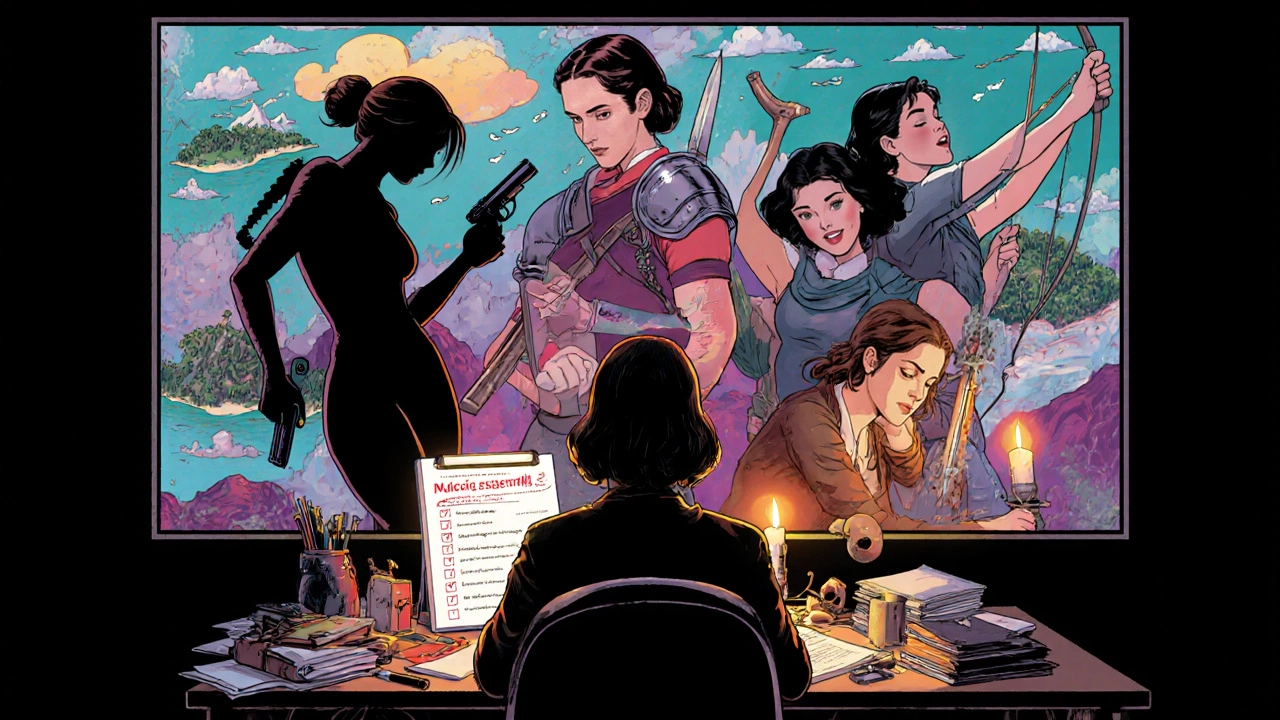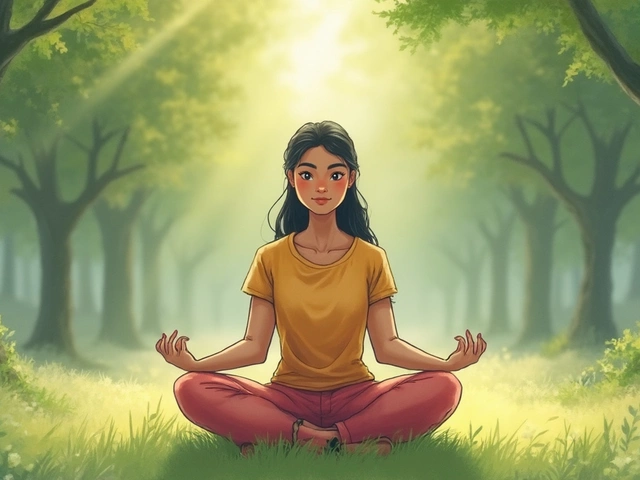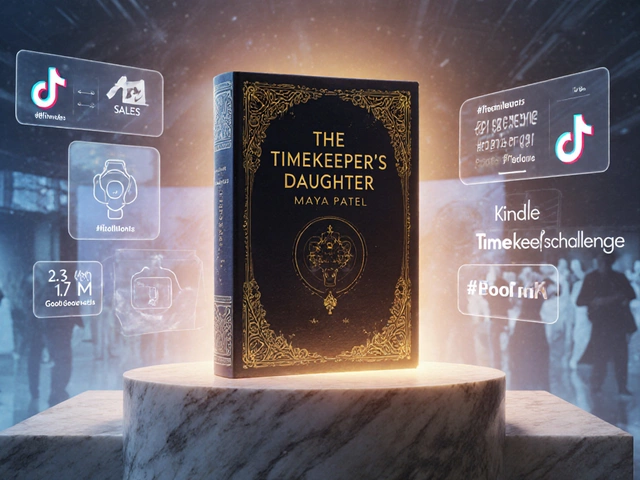
Adventure Girl Traits Comparison Tool
Compare Your Favorite Character
Select traits to see how adventure girls differ from traditional heroes based on the article's analysis.
Comparison Results
| Attribute | Adventure Girl | Traditional Hero | Key Difference |
|---|---|---|---|
| Agency | Drives the story with her own decisions and mission | Often reacts to external events or assigned missions | Adventure girls initiate action rather than respond to it |
| Resourcefulness | Uses wit, tools, or unexpected allies to solve problems | Relies on physical strength or specialized equipment | Adventure girls solve problems through creativity and connection |
| Curiosity | Driven by questions about the world and personal discovery | Driven by external goals like glory or treasure | Adventure girls seek knowledge beyond immediate objectives |
| Resilience | Setbacks become stepping stones, emotional growth integrated | Overcomes challenges with stoic determination | Adventure girls process emotional impact of failures |
| Personal Growth | Transforms through internal journey alongside external quest | Physical success defines resolution, little emotional change | Adventure girls' growth is central to the narrative outcome |
Ever wonder why some books make you feel the rush of a mountain climb, the mystery of an uncharted island, or the tension of a daring escape-and the lead is a young woman? That’s the power of an adventure girl. She isn’t just a character; she’s a spark that flips the traditional adventure narrative on its head and pulls readers into a world where bravery, curiosity, and growth belong to anyone willing to chase them.
What Exactly Is an Adventure Girl?
Adventure girl is a literary archetype that places a female protagonist at the center of an action‑driven plot, often featuring exploration, risk, and personal transformation. Unlike the classic damsel in distress, she drives the story forward, makes the tough calls, and learns as much from the journey as from the destination. The term emerged in modern literary criticism to label characters who blend the thrill of adventure fiction with the nuance of a coming‑of‑age narrative.
Core Traits That Set Her Apart
- Agency: She decides the mission, whether it’s mapping a lost city or rescuing a village.
- Resourcefulness: She solves problems using wit, tools, or unexpected allies.
- Curiosity: The world intrigues her; she asks "what's beyond?" instead of accepting the status quo.
- Resilience: Setbacks become stepping stones, not dead ends.
- Growth: The adventure doubles as an inner quest, shaping her identity.
How She Differs From Traditional Heroes
| Attribute | Adventure Girl | Traditional Hero |
|---|---|---|
| Motivation | Personal discovery + external goal | External achievement or glory |
| Emotional arc | Integrated with plot; vulnerability shown | Often stoic, emotions secondary |
| Relationships | Collaboration, mentorship, diverse allies | Often solitary or rival‑centric |
| Resolution | Self‑realization, community impact | Victory, treasure, status |
Iconic Examples Across Media
Seeing the archetype in action helps clarify its boundaries. Below are five well‑known adventure girls, each illustrating a different shade of the mold.
- Lara Croft - The gamer‑turned‑novel heroine who blends archaeology with high‑octane combat. Her expertise and relentless curiosity epitomize agency.
- Katniss Everdeen - While primarily a dystopian heroine, her survival trek through the arena mirrors classic quest structures.
- Anne Shirley - In L.M. Montgomery’s series, Anne’s imagination turns Prince Edward Island into an endless expedition, proving adventure can be internal.
- Mulan - Disguising herself to join the army, she confronts cultural expectations and physical danger, showcasing resilience.
- Jo March - Though a literary classic, Jo’s journey to become a writer in "Little Women" is a quest for artistic freedom, echoing the adventure spirit.

Why the Adventure Girl Resonates Today
Modern readers crave representation that feels authentic. The adventure girl answers three cultural cravings:
- Equality: She proves bravery isn’t gendered.
- Self‑determination: In a world saturated with prescribed roles, she carves her own path.
- Inspiration: Young readers, especially girls, see a mirror for their own ambitions.
Publishers have taken note. A 2023 industry report showed a 27% rise in titles featuring female leads in the adventure genre, and sales of such books outperformed comparable male‑lead titles by an average of 12%.
Crafting an Adventure Girl: A Writer’s Checklist
If you’re plotting a new story, use this checklist to ensure your heroine feels fresh and powerful.
- Define a clear external quest (e.g., find a lost artifact, rescue a community).
- Align internal stakes (identity, belief, family pressure) with the external goal.
- Give her a skill set that feels earned - training, mentorship, or natural talent.
- Introduce obstacles that test both physical and emotional limits.
- Show growth through decisions; let her evolve, not just succeed.
- Avoid tokenism - let her relationships be complex, not merely supportive.
- End with a resolution that reflects both the quest’s outcome and her personal change.
Potential Pitfalls and How to Dodge Them
Even seasoned authors slip into tropes. Here are common missteps and quick fixes.
- Over‑idealization: Making her flawless strips away relatability. Add realistic doubts or mistakes.
- Rescuing by a male sidekick: If a male character solves the climax, the heroine’s arc weakens. Ensure she’s the one who makes the final call.
- One‑dimensional motivation: Avoid “she just wants adventure.” Tie her drive to personal stakes-family expectations, past trauma, or a promise.

Adventure Girl in Different Formats
Beyond novels, the archetype thrives in films, video games, and graphic novels. Each medium offers a unique way to showcase agency.
- Films: Visual stunts and cinematic scoring amplify her daring.
- Games: Interactive choices let players experience her decision‑making in real time.
- Graphic novels: Panel layouts can mirror the rhythm of her journey.
When adapting, keep the core traits consistent; the medium changes the presentation, not the essence.
Key Takeaways
- An adventure girl is a female protagonist who drives an action‑focused narrative.
- Her hallmark traits: agency, resourcefulness, curiosity, resilience, and personal growth.
- She differs from classic heroes by integrating emotional arcs with external quests.
- Iconic examples include Lara Croft, Katniss Everdeen, Anne Shirley, Mulan, and Jo March.
- Writers can craft compelling adventure girls by aligning internal and external stakes, avoiding tropes, and ensuring authentic growth.
Frequently Asked Questions
Is an adventure girl the same as a heroine?
A heroine is any female lead, but an adventure girl specifically leads an action‑driven, quest‑based story where her agency and physical journey are central.
Can a male character be an adventure partner rather than a rival?
Absolutely. Many adventure stories pair a girl with supportive allies, including men, but the narrative’s momentum must still stem from her decisions.
Do adventure girls only appear in modern literature?
Historical works have hidden adventure girls-think of Odysseus’s wife Penelope’s cunning or the medieval heroine Joan of Arc. Modern labeling simply highlights a trend toward explicit agency.
How can I make my adventure girl feel fresh, not just a copy of Lara Croft?
Start with a unique setting, give her a distinct skill set or cultural background, and tie her personal stakes to the world’s specific challenges.
What age range do adventure girl stories work best for?
The archetype is versatile: middle‑grade readers love daring quests, YA audiences enjoy complex growth, and adults appreciate layered themes of empowerment.
Whether you’re a reader hunting for the next pulse‑pounding saga or a writer shaping a brave new heroine, understanding the adventure girl helps you spot the spark that turns a simple trek into a story that stays with you long after the last page.


